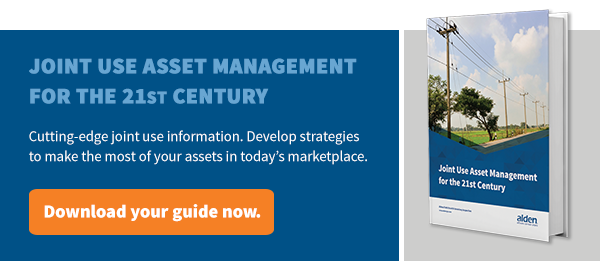Winning Strategies (Part 1): How Pole Owners Can Generate Revenue
 In the past, when companies were regulated entities, they could operate under a cost-plus business model that allowed them to earn profits on top of asset investments. Under this approach, the primary focus was to contain expenses. However, with the deregulation that occurred in the late 20th century, business models transitioned to free market profit and loss. This left many holding assets that were not contributing to the bottom line, but were needed in order to deliver their company's services—and worse yet, were required by the government to be shared with other (sometimes competing) companies.
In the past, when companies were regulated entities, they could operate under a cost-plus business model that allowed them to earn profits on top of asset investments. Under this approach, the primary focus was to contain expenses. However, with the deregulation that occurred in the late 20th century, business models transitioned to free market profit and loss. This left many holding assets that were not contributing to the bottom line, but were needed in order to deliver their company's services—and worse yet, were required by the government to be shared with other (sometimes competing) companies.
So how could pole owners turn this change in the field asset management industry around to convert it into a benefit for their bottom lines?
Mindset Change: From Necessary Evil to Profitable Real Estate
Utility pole, conduit, (and really any field asset) owner can rethink the joint use business with a new mindset of generating revenue and balancing expenses. The key to adopting this mindset is to focus on the profit returned on each dollar invested in the assets—and then to maximize that return. This "return on assets" approach can turn field asset ownership from a necessary evil that is a secondary business function into a revenue-generating business.
Some companies are even spinning off joint use asset divisions into real estate investment trusts (REITs), which propels them into focusing on revenue. For example, Windstream Communications transitioned this part of the business into a REIT called CS&L.
Demand is currently growing faster than supply, which creates significant business opportunities. Asset owners need to consider market rates that cover all of their carrying costs so that increases in joint use revenue can fund asset maintenance, including upgrades and replacements of aging plant assets, which can then support asset owners' product offerings.
Winning Strategies: 2 Tips to Maximize Return
By looking to outside industries and companies that never existed as regulated entities, we can gather insight on how to position an asset as a revenue generator. From this perspective, we have identified the following strategies for infrastructure asset owners.
1. Capture and Market Available Space
Many asset owners do not have an accurate inventory of available space for lease on a pole or in conduit, for example. In order to make the most of these field assets, it is critical to know exactly what you own, where it is located, and what condition it is in. Field inventories can be conducted to identify available space on poles, towers and in conduit, or data can be pulled from existing GIS or engineering systems.
Once an asset owner has a comprehensive understanding of their available space and has considered what percentage of available space should be held for future internal expansion, they can take a proactive approach to leasing that space. Rather than simply responding to requests to attach as they come in, asset owners can actively market the remaining available space to fill it with paying attachers.
Note: While many companies are hesitant to expose any data regarding their plant, software applications can be used to market available space to potential attachers while keeping all other proprietary data secure.
2. Centralize: One Group, One System, One Process
To streamline asset management functions, many companies can benefit from eliminating the corporate silos that often divide these operations such as:
- Budgeting
- Field visits
- Asset maintenance
- Application processing
By allowing a single group to oversee these functions, it becomes possible to minimize field work. For example, removing dead plant or installing guy guards could be addressed during a more pressing field visit to a utility pole if a central group is aware of all of the services needed for that one pole.
Additionally, many companies will invest in one or more software systems for asset management and permitting. However, incomplete roll-outs are common in which areas of a company will continue to use legacy systems (spreadsheets, email, or other applications) to perform some tasks. This waters down the software's ability to provide operational advantages. Data should exist in a single system of record so there is one version of the state of assets. The company should identify the system to be adopted by all users and eliminate all other systems and methods.
Once a joint use group or asset management department implements a single software system, workflows can be created to define the company's processes to keep everyone on the same page.
This two-part blog series will continue in our next post, which will discuss six more strategies for managing risk and liability, conducting timely pole transfers, NESC coordination, structural testing, and data responsibility.
The joint use industry is entering a new era of modernization. Learn more strategies for positioning your joint use business for future success by downloading our new eBook, Joint Use Asset Management for the 21st Century.
